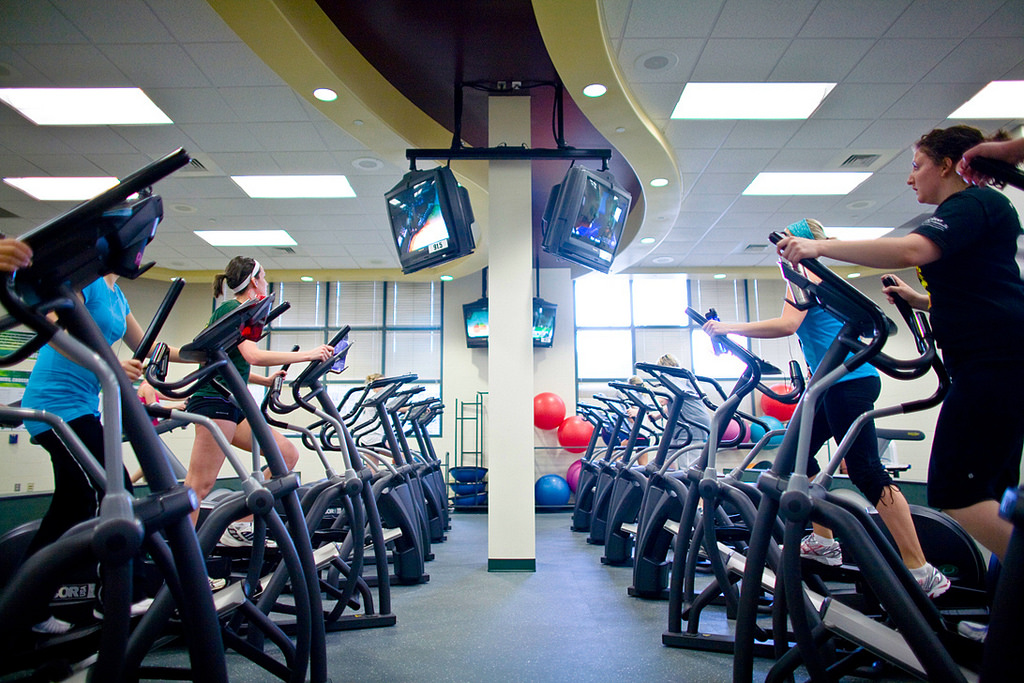3.1 Activity and Exercise
Learning Objectives
- List the physical and mental health benefits of regular exercise.
- Plan a program of regular exercise that you enjoy and can maintain.

Exercise is good for both your body and mind. Indeed, physical activity is almost essential for good health and university success. The physical benefits of regular exercise include [1]
- Improved fitness for the whole body
- Greater cardiovascular fitness and reduced disease risk
- Increased physical endurance
- Stronger immune system, providing more resistance to disease
- Lower cholesterol levels, reducing the risks of cardiovascular disease
- Lowered risk of developing diabetes
- Weight maintenance or loss
Also important to students, who tend to be under a lot of stress, are the mental and psychological benefits [2]:
- Stress reduction
- Improved mood, with less anxiety and depression
- Improved ability to focus mentally
- Better sleep
For these reasons, it’s important for university students to engage in physical activity regularly. Like good nutrition and getting enough sleep, exercise is a key habit that contributes to overall wellness.
With aerobic exercise, your heart and lungs are working hard enough to improve your cardiovascular fitness. This generally means moving fast enough to increase your heart rate and breathing. To realize health benefits of physical activity, try to achieve at least 150 minutes of moderate-to-vigorous levels of aerobic physical activity in a week[3]. You don’t even have to go to the gym to fulfill this minimum; you can simply take a brisk walk daily between class times or study sessions, and climb the stairs rather than take the elevator. You can also try the seven-minute workout created by the Human Performance Institute in Orlando, Florida; researchers Brett Klika and Chris Jordan developed a high-intensity workout using only body weight as resistance (see DOI: 10.1249/FIT.0b013e31828cb1e8). They recommend aerobic and resistance training session lasting about seven minutes, but that can be repeated up to three times if you are wanting more exercise. The sample workout included in their article includes jumping jacks, wall sits, pushups, step-ups, squats, tricep dips, planks, running in place, lunges, and side planks. If you are wanting other workouts, simply google “HICT workouts,” but be sure to get clearance from your doctor, and direction from someone who knows how to do the exercises safely and properly!
If you really enjoy exercise and are motivated, you may exercise as often as six days a week, but take at least one day of rest. When you’re first starting out, or if you’ve been inactive for a while, take it gradually, and let your body adjust between sessions. If you feel sharp pain in any activity, stop or cut back (see Johns Hopkins Medicine’s advice for differentiating between good and bad pain). The way to build up strength and endurance is through a plan that is consistent and gradual.
For exercise to have aerobic benefits, try to keep your heart rate in the target heart rate zone for at least twenty to thirty minutes. The target heart rate is 60 percent to 85 percent of your maximum heart rate, which can be calculated as 220 minus your age. For example, if you are 24 years old, your maximum heart rate is calculated as 196, and your target heart rate is 118 to 166 beats per minute. If you are just starting an exercise program, stay at the lower end of this range and gradually work up over a few weeks. “Additional Resources” below includes an online calculator that estimates your target heart rate depending on your present level of fitness.
Enjoy It!
Most important, find a type of exercise or activity that you enjoy—or else you won’t stick with it. This can be as simple and easy as a brisk walk or slow jog through a park or across campus. Swimming is excellent exercise, but so is dancing. Think about what you like to do and explore activities that provide exercise while you’re having fun. If you tire of your chosen activities, try something new.
Do whatever you need to make your chosen activity enjoyable. Many people listen to music or a podcast, watch a show, or read when using workout equipment. Try different activities to prevent boredom. Exercising with a friend can be more enjoyable and keeps you both accountable. Some people like their activity to do double duty. For example, a paper route gives you some exercise twice a week, and it makes you a little bit of money; walking or running while listening to an educational podcast related to your studies helps to enrich your learning while working toward your exercise quota.
You can also learn to stay motivated using exercise equipment. Wearable activity trackers are a popular way to track your progress to help stay active throughout the week.
Often the biggest obstacle to getting enough exercise, many students would likely agree, is a lack of time. Actually, we all have the time, if we manage it well. Build exercise into your weekly schedule on selected days. Eventually, you’ll find that regular exercise actually saves you time because you’re sleeping better and concentrating better. Time you used to fritter away is now used for activity that provides many benefits.
Campus Activities Can Help
The University of Saskatchewan has resources to make exercise easier and more enjoyable for their students. Take a look around and think about what you might enjoy. The Physical Activity Centre on campus offers exercise equipment, and regularly schedules yoga, aerobic, or spin classes. You don’t have to be an athlete to enjoy casual sports such as playing tennis or shooting hoops with a friend. If you like more organized team sports, try intramural sports, organized through Campus Rec.
- Public Health Agency of Canada. (n.d.). Canada's Physical Activity Guide. Retrieved from: http://www.physicalactivityplan.org/resources/CPAG.pdf ↵
- Canadian Mental Health Association. (n.d.). Benefits of Good Mental Health. Retrieved from: http://toronto.cmha.ca/mental_health/benefits-of-good-mental-health/ ↵
- Canadian Society for Exercise Physiology. (n.d.). Canadian Physical Activity Guidelines. Retrieved from: http://csep.ca/CMFiles/Guidelines/CSEP_PAGuidelines_adults_en.pdf ↵

